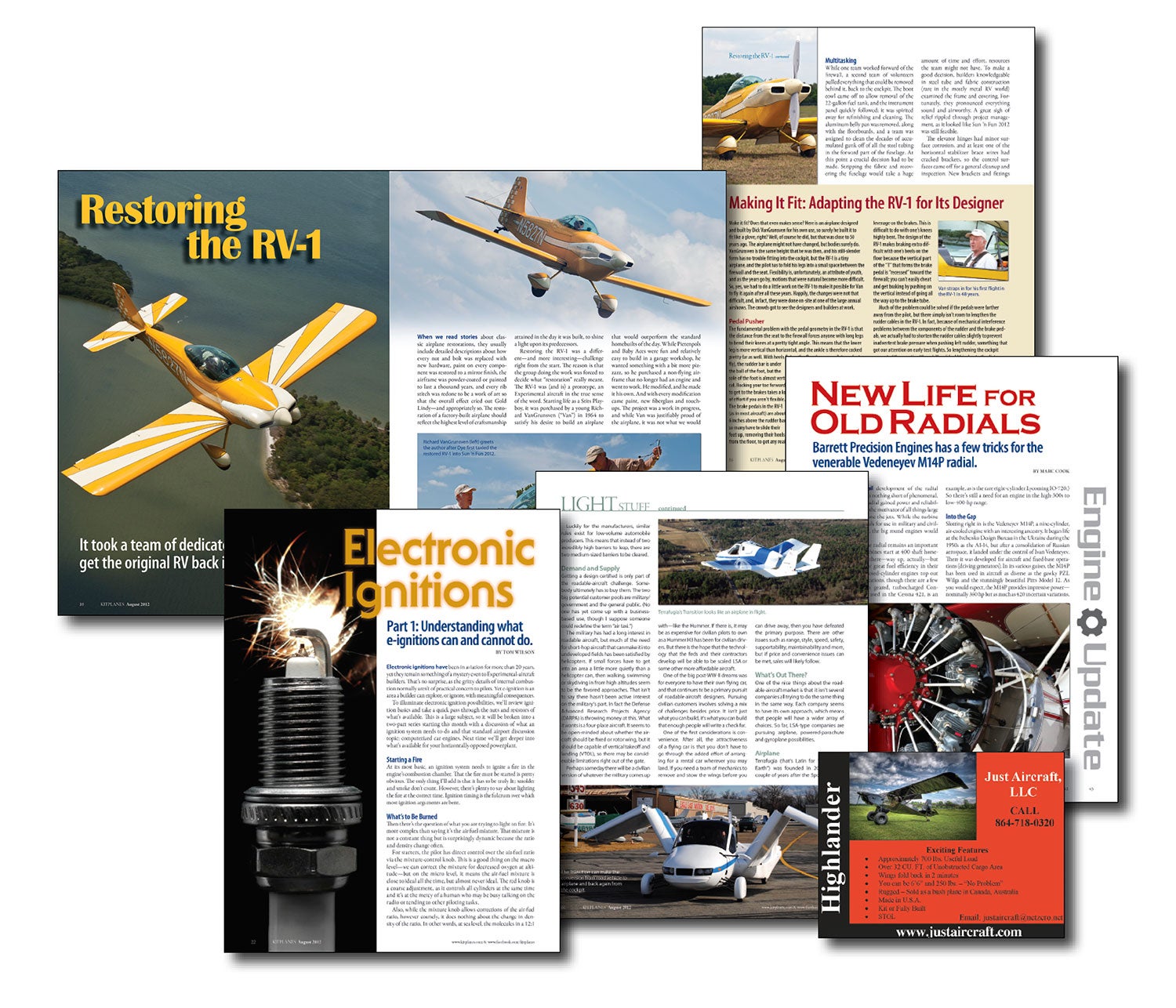 Our cover story for the August 2012 issue was a special one closely and personally followed by then Senior Editor Paul Dye. None other than the RV-1, the airplane that would launch an entire company and, to be fair, set the world of Experimental aircraft on a new path. Paul noted that normal restorations would aim to re-create the factory ship to the “highest level of craftsmanship.” Perhaps not. “Restoring the RV-1 was a different—and more interesting—challenge right from the start. The reason is that the group doing the work was forced to decide what ‘restoration’ really meant. The RV-1 was (and is) a prototype, an Experimental aircraft in the true sense of the word. Starting life as a Stits Playboy, it was purchased by a young Richard VanGrunsven (‘Van’) in 1964 to satisfy his desire to build an airplane that would outperform the standard homebuilts of the day,” Paul wrote.
Our cover story for the August 2012 issue was a special one closely and personally followed by then Senior Editor Paul Dye. None other than the RV-1, the airplane that would launch an entire company and, to be fair, set the world of Experimental aircraft on a new path. Paul noted that normal restorations would aim to re-create the factory ship to the “highest level of craftsmanship.” Perhaps not. “Restoring the RV-1 was a different—and more interesting—challenge right from the start. The reason is that the group doing the work was forced to decide what ‘restoration’ really meant. The RV-1 was (and is) a prototype, an Experimental aircraft in the true sense of the word. Starting life as a Stits Playboy, it was purchased by a young Richard VanGrunsven (‘Van’) in 1964 to satisfy his desire to build an airplane that would outperform the standard homebuilts of the day,” Paul wrote.
Instead, the RV-1 reflected VanGrunsven’s practical bent, having purchased the non-flying airframe intending to modify it. “And with every modification came paint, new fiberglass and touch-ups. The project was a work in progress, and while Van was justifiably proud of the airplane, it was not what we would consider ‘show quality’ today. There were changes upon changes, and those almost always leave scars. Airworthy? Yes. Revolutionary? Yes. Cosmetically perfect? Well, that wasn’t a top priority.”

Eventually, Van himself got to fly the resuscitated RV-1. “In flight, the handling qualities were much as I had remembered them to be: delightful. After a few minutes of flight I radioed back, ‘It’s a shame that this airplane was so underused for all of these years. It flies too well.’”
Elsewhere in the issue, Tom Wilson began a discussion of electronic ignition for aircraft, focusing on how it does what it does, and what pilots should expect from the technology. “The main benefit to expect is better fuel economy from variable ignition timing, especially at altitude. The fixed timing of magnetos is easy pickings, even for an airplane engine that spends most of its life at 2200 to 2500 rpm. One thing you ought not expect is increased maximum power. Climb and top speed shouldn’t increase, because magnetos are already good in the simple, wide-open-throttle regime.”
Your current Editor in Chief spent time with Barrett Precision Engines to look at the company’s programs for the Vedeneyev M14P radial. He concluded the story by saying, “At a time when a new 300-hp, six-cylinder engine is crowding $60,000, the M14P looks like a great deal. A complete overhaul including these new products [revised induction system and electronic ignition] runs $36,000, while an engine purchased outright costs $46,000. That’s not bad to get 360 hp onto the front of your project—especially when you consider that the Vedeneyev is cranking out this power with relative ease and sounding great in the bargain. Long live the radial!”
While that feature took a look forward with an older technology, we also considered roadable aircraft and took a closer look at the future of electric propulsion—with motorhead Cook leveraging an editorial for some seat time on a Zero electric motorcycle—while Dean Sigler considered some of the environmental impacts of various propulsion systems. Prescient, then, that Paul Dye’s current eXenos project borrowed the powertrain from a Zero motorcycle. We’re still waiting for viable roadable aircraft, though.













